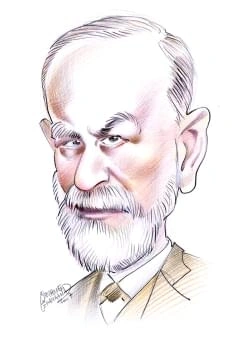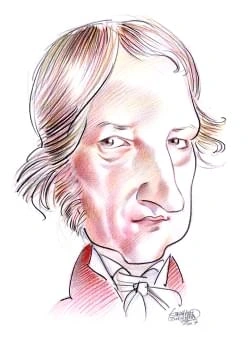2662 résultats pour "regions"
-
BIOSPHÈRE
LES BIOMES
GÉNÉRALITÉS
La surface de la Terre n'est pas uniforme, mais
2 régions les plus arides de la Terre. Dans les déserts chauds, les températures diurnes dépassent 38 °C et il ne pleut jamais, car les masses d’air en mouvement ont perdu toute la vapeur d’eau qu’elles contenaient. Les savanes sont des prairies tropicales plus ou moins arides, où des arbres poussent parfois çà et là. Ces étendues herbacées plus ou moins arborées caractérisent les régions tropicales et subtropicales où la température est constamment élevée, et où il existe des variations saison...
-
Les facteurs de tensions dans la région du Cachemire
Les facteurs de tensions dans la région du Cachemire L’une des zones les plus militarisées au monde est la région du Cachemire située au Nord de l’Inde et au Nord-Est du Pakistan. Ces deux états, dotés de l’arme nucléaire depuis 1998, s’affrontent pour le contrôle de cet espace montagneux de l’Himalaya. En quoi la région du Cachemire constitue-t-elle une zone de haute tension ? Tout d’abord, des raisons historiques peuvent expliquer ce conflit, mais des facteurs ethniques et religieux vien...
-
L'Amérique du Sud
Le sud est la région de l'élevage intensif, des cultures de blé et de soja, des plantations de café et de canne à sucre, �t.t..a .... ..,._ également présentes le long de la côte atlantique avec la culture du cacao. UN GRAND ÉTAT : LE BRÉSIL � -;;'' ] .··_ �---- - -� -�l . . • Superficie : 8 512 ooo km'. Population : 164 400 000 hab., dont 74 % d'urbains. Capitale : Brasilia (500 ooo hab.). Les plus grandes villes sont Sao Paulo (10 mi...
-
Né de la partition de l'Inde britannique en 1947, le P?kist?n est
une république islamique, constitutionnelle mais instable.
Sind Thar Les livres Pakistan - la passe de Khaybar, page 3664, volume 7 Pakistan - vallée de l'Indus, page 3665, volume 7 Pakistan - le Baloutchistan, page 3666, volume 7 Les aspects humains. Les habitants du Pākist ān sont presque tous musulmans, puisque l'État islamique pakistanais est né en 1947 de la volonté des musulmans des Indes britanniques d'obtenir un État séparé de celui des hindous. En revanche, la diversité des peuples est grande. Les Pachtouns (ou Path āns), que l'on trou...
-
Géorgie.
5 ÉCONOMIE 5.1 Généralités Située entre la Russie et la Turquie, la Géorgie occupe une place géostratégique de premier plan sur les voies du gaz et du pétrole. Son développement se fondetraditionnellement sur l’agriculture. Il comprend également l’industrie, les services et la construction (oléoduc Bakou-Tbilissi-Ceyhan, gazoduc Bakou-Tbilissi-Erzurum etligne ferroviaire entre l’Azerbaïdjan et la Turquie vie la Géorgie). République la plus prospère du temps de l’URSS (en 1991, le produit intér...
-
Géographie: LANGUEDOC -ROUSSILLON
Lang uedoc-Roussi llon climatiques (concentration des pluies, séche resses extrêm es), l'i mportance de leur bassin dont le versant est réduit peuvent les rendre redoutables. La végétat ion est étagée. Les rési neux (pins noirs, pins de Douglas, sapins et épi céas) en altitude et les châtaigner aies se situent entre 300 et 1000 rn, tandis qu'en dessous domi nent garrigue, lavande et romarin. Les surfaces boisées représentent 806400 ha. Une terre d'invasi...
-
Congo, République démocratique du.
Maisons de chaume (République démocratique du Congo)Environ deux tiers des habitants de la République démocratique du Congo (ex-Zaïre) sont des ruraux. L'agriculture emploie près de60 p. 100 de la population active.George Holton/Photo Researchers, Inc. La République démocratique du Congo compte sept groupes ethniques et près de trois cents sous-groupes. Les principaux groupes sont majoritairement bantous : Kongo,Batéké, Luba, Lunda et Kuba. Au nord-ouest du pays se trouvent des Nilotiques, les P...
-
grenouille.
Les dendrobatidés sont des grenouilles de petite taille, inférieure à 5 cm. On en connaît environ 200 espèces. Ce groupe comprend notamment les dendrobates (genreDendrobates ) et les phyllobates (genre Phyllobates ), dont la peau contient des toxines très puissantes et arbore de vives couleurs jouant un rôle d’avertissement pour les prédateurs. Les dendrobatidés ont des mœurs arboricoles. Leurs œufs sont pondus sur des feuilles ou à même le sol ; à leur éclosion, les adultes prennent les têtard...
-
-
Le modelé des régions glaciaires et périglaciaires
A 150 rn/an avec une épaisseur maximum de 500 à 800 m. Mais cette glace peut être presque tout entière proche du point de fusion (glaciers dits tempérés). Les modalités d'érosion • Sous le glacier, quand il n'est pas ago nisant, il semble que des phénomènes de dégel gel se produisent de part et d'autre de chaque protubérance : ils faciliteraient le glissement du glacier et la désagrégation des protubéran ces par cryoclastie;...
-
Voisin des États-Unis, le Mexique, État fédéral, est la deuxième
grande puissance démographique et économique de l'Amérique
latine.
Californie (Basse-) Chihuahua Madre (sierra) Mexique (golfe du) Popocatépetl Tehuantepec (isthme de) Yucatán La diversité climatique. L'étirement en latitude et l'étagement lié à l'altitude entraînent une grande diversité climatique. Trois grands ensembles naturels peuvent être dégagés : le Sud tropical humide, le Nord semi-aride et le Centre volcanique, où l'Altiplano et les basses terres ont un climat tropical à deux saisons (sèche de novembre à mai et humide de juin à octobre). À la l...
-
L'Inde et le sous-continent indien
Il se situe dans les chaînes de I'Hindu Kuch et du Karakorum qui séparent le Pakistan respectivement de l'Afghanistan et de la Chine. À l'ouest, la passe de Khyber relie le Pakistan à l'Afghanistan. le centre est dominé par les monts Sulayman et Toba Kakar. Dans le sud-ouest, le Baloutchistan est occupé par un grand plateau aride. LE CLIMAT • Climat continental, peu marqué par la mousson. Dans les plaines, les hivers sont frais et les étés cha...
- Béarn Région traditionnelle du S.
-
La péninsule du Sinaï à travers l'histoire
rejoint l'Empire romain que lorsque Trajan conquiert le sud de la Syrie et crée la pro vince d'Arabie, en 106 après J.-C. Au v• siècle, à la suite des modifications instaurées par l'Empire byzantin, le Sud- Si naï est intégré dans la provin ce de Palestine Troisième . Une région difficilement contrôlable B ien avant l'avènement de l'islam, le Sinaï est une terre arabe peuplée de tribus no mades, appelées Badwou Bé douin...
-
Chine.
la partie nord du plateau de l’Ordos, ils sont recouverts d’un fin limon d’origine éolienne, le lœss. Peu compact, le lœss, épais de 200 m, est très sensible à l’érosion(ravinement), la surface des plateaux étant incisée par de nombreux ravins aux parois verticales. Débordant sur le Xinjiang, la Mongolie-Intérieure et le Gansu, le désert de Gobi est un désert de sable et de pierres de type continental. Il s’étend sur le plateau Mongol,situé entre 800 et 1 200 m d’altitude. La végétation devient...
-
Cambio climático - geografía.
relevante que influye en la dinámica del clima en la Tierra. El hielo presente en las regiones polares proporciona datos sobre la composición de la antigua atmósfera de la Tierra. Los núcleos de hielo analizados por los científicos,procedentes de las placas de hielo de Groenlandia y de la Antártida, ofrecen información sobre la temperatura y los gases de efecto invernadero presentes en la atmósferade hace cientos de miles de años. Las capas de estos núcleos de hielo formadas por las nevadas esta...
-
Cambio climático - ciencias de la naturaleza.
relevante que influye en la dinámica del clima en la Tierra. El hielo presente en las regiones polares proporciona datos sobre la composición de la antigua atmósfera de la Tierra. Los núcleos de hielo analizados por los científicos,procedentes de las placas de hielo de Groenlandia y de la Antártida, ofrecen información sobre la temperatura y los gases de efecto invernadero presentes en la atmósferade hace cientos de miles de años. Las capas de estos núcleos de hielo formadas por las nevadas esta...
-
-
Indonesia (república) - geografía.
3 POBLACIÓN Los indígenas de Indonesia tienen un origen predominantemente malayo. Los grupos étnicos más diferenciados son los javaneses y los sondaneses —que viven, sobre todo,en Java y Madura—, los balineses, en la isla de Bali, y los bataks en Atjehnese, en Sumatra. Otros grupos minoritarios distribuidos por las islas son una veintena de etniasmalayas, varios millones de chinos y otros habitantes de origen asiático. El número de holandeses, que se estimaba en torno a 60.000 a finales de la d...
-
Asia - geography.
the Himalayas, the world’s highest mountain system. The Pacific Ocean plate drifted westward, scraping along the Eurasian plate and slipping under its coastal edge. This created the islands of Japan, Taiwan, the Kurils, theRyūky ūs, and the Philippines. Southeast Asia lies at the intersection of the Eurasian, Pacific Ocean, and Indian Ocean plates. Over time the contact between these platescreated the mountain ranges of mainland Southeast Asia. The continued slow movement of the plates causes fr...
-
Asia - history.
the Himalayas, the world’s highest mountain system. The Pacific Ocean plate drifted westward, scraping along the Eurasian plate and slipping under its coastal edge. This created the islands of Japan, Taiwan, the Kurils, theRyūky ūs, and the Philippines. Southeast Asia lies at the intersection of the Eurasian, Pacific Ocean, and Indian Ocean plates. Over time the contact between these platescreated the mountain ranges of mainland Southeast Asia. The continued slow movement of the plates causes fr...
-
La guerre d'Indochine: Les débuts de la décolonisation française
�------�--•�"'"""hommes fin 1946), le gouvernement et son chef, Hô Chi Minh, gagnent l'abri des bases révolutionnaires dans le haut Tonkin : la guerre d'Indochine a commencé. LES GRANDES PHASES DU CONFLIT le conflit peut être divisé en trois grandes périodes. 1946-1950: LES PROGRls DU Vth·MINH Dans un premier temps, la France mène seule, avec son armée de métier, sous le regard distant ou hostile des grandes puissances, une guerre purement colonia...
-
Sismo - ciencias de la naturaleza.
como ocurre en la falla de San Andrés en California y México, o es subducida (se desliza bajo otra). Los sismos de las zonas de subducción son casi la mitad de los sucesossísmicos destructivos y liberan el 75% de la energía sísmica. Están concentrados en el llamado Anillo de Fuego, una banda estrecha de unos 35.000 km de longitud quecoincide con las orillas del océano Pacífico. En estos sismos los puntos donde se rompe la corteza terrestre suelen estar a gran profundidad, hasta 645 km bajo tierr...
-
Tibet - geographie.
Baumwolle, Sojabohnen und Hanf dient dem Handel. Die Industrie ist zwar gewachsen, bleibt jedoch insgesamt auf kleinere Betriebe beschränkt. Dort werden u. a.Textilien, Holz- und Metallerzeugnisse produziert. 6 GESCHICHTE Die Bevölkerung Tibets ist vermutlich aus dem Huang-He-Tal und dem zentralasiatischen Raum, in dem sich nomadische Turkvölker aufhielten, in das Gebiet eingewandert.Das frühe Tibet war in Fürstentümer unterteilt, die im 6. Jahrhundert zusammengelegt wurden. Srong-brtsan-sgam-p...
-
Middle East - Geography.
though overall they have improved considerably since the 1970s. This variation reflects the different levels of wealth and development in countries of the Middle East. Inthe highly developed country of Israel the infant mortality rate was 8 deaths per 1000 live births in 1997. By comparison, the rate per 1000 live births was 71 in less-developed Egypt and 75 in Yemen. A Ethnic Groups and Languages Arabs make up the majority of the people of the Middle East, accounting for almost the entire popu...
-
Mfecane.
The Kololo, a Sotho people, entered the same region in the early 1820s after being driven from their homeland south of the Vaal River by the Ngwane-Hlubi wars. In1823 the Kololo clashed with the Griqua and turned north into the Kalahari Desert. They eventually crossed the Zambezi and finally settled in what is now westernZambia after overthrowing the powerful Lozi Kingdom in 1840. D Founding of the Sotho Nation The Ngwane-Hlubi wars also drove loosely organized Sotho communities north into the...
-
-
étoile - astronomie.
L’atmosphère d’une étoile désigne l’ensemble du gaz transparent aux rayonnements électromagnétiques et lié à l’étoile par les forces de gravitation. 5.2 Photosphère La basse atmosphère d’une étoile débute à la photosphère, caractérisée par une certaine valeur de la température. À la photosphère solaire est associée une températureeffective de 5 770 K (kelvins). Certaines régions, les taches solaires, sont plus froides que la photosphère avoisinante. Les taches photosphériques, caractéristiques...
-
New York (ville)1PRÉSENTATIONNew York (ville), en anglais New York City, ville du sud-est de l'État de New York, située dans le nord-est des États-Unis, à l'embouchure de l'Hudson, sur l'océanAtlantique.
Les différents districts de New York sont reliés entre eux par de nombreux ponts et tunnels : Brooklyn Bridge, Manhattan Bridge, Brooklyn-Battery Tunnel entre Manhattanet Brooklyn ; Verrazano-Narrows Bridge, l’un des plus longs ponts suspendus du monde, entre Brooklyn et Staten Island ; Queensboro Bridge entre Manhattan et leQueens ; Triborough Bridge entre Manhattan, le Queens et le Bronx ; enfin, le George Washington Bridge, les tunnels Holland et Lincoln, et la voie Port Authority Trans-Hudso...
-
Republik Niger - geographie.
4.2 Medien Staatlich kontrollierte Radio- und Fernsehstationen strahlen Programme in mehreren Sprachen aus. Die Tageszeitung Le Sahel wird in Niamey herausgegeben. 5 VERWALTUNG UND POLITIK Niger ist seit 1960 eine Präsidialrepublik. Sie wird nach der Verfassung vom Juli 1999 regiert. Der Staat gliedert sich in acht Departements. Die vergangenen Jahrzehntewaren geprägt vom Wechsel zwischen Herrschaft des Militärs und zivilen Regierungen. 5.1 Exekutive Staatsoberhaupt ist der vom Volk für ei...
-
Development (biology) - biology.
Understanding the molecular machinery within cells gives biologists a direct basis for understanding growth, because growth is the synthesis of new protoplasm, andbiologists know the basic mechanism of this synthesis. One key gap, however, exists in this knowledge. Biologists want to know not only how substances aresynthesized but also how growth is controlled so that the proportions of an animal or plant remain consistent from generation to generation. The direction and amountof growth, which a...
-
Albania - country.
Joining the international community in its concern over the degradation of the environment, Albania is party to international agreements concerning biodiversity, climatechange, and wetlands. III THE PEOPLE OF ALBANIA In 2008 Albania’s population estimate was 3,619,778, resulting in an average density of 132 persons per sq km (342 per sq mi). More and more people have left ruralareas for urban ones, particularly in the northern districts, such that in 2005 some 45 percent of the population live...
-
Democratic Republic of the Congo - country.
Except in the high elevations, the country’s climate is very hot and humid. The average annual temperature in the low central area is about 27°C (about 80°F).Temperatures are considerably higher in February, the hottest month. At altitudes above about 1,500 m (about 5,000 ft) the average annual temperature is about 19°C(about 66°F). Average annual rainfall is about 1,500 mm (about 60 in) in the north and about 1,300 mm (about 50 in) in the south. Frequent heavy rains occur fromApril to November...
-
Alemania - geografía.
vecinos. Un acuerdo internacional ejemplar obliga a Alemania a ayudar en la protección medioambiental del Waddenzee o mar de Wadden, el brazo oriental del mar delNorte que comparte con Países Bajos y Dinamarca. Alemania firmó el Convenio sobre el Patrimonio de la Humanidad en 1976 y cuenta con nueve reservas de la biosferareconocidas por el programa El Hombre y la Biosfera de la Organización de las Naciones Unidas para la Educación, la Ciencia y la Cultura (UNESCO). Además, existen unaserie de l...
-
Asia - Geography.
Borneo, the world’s third largest island after Greenland and New Guinea. To the southeast is the Timor Sea separating the Asian island of Timor from the Australiancontinent. The Indian subcontinent is flanked by the Bay of Bengal on the east and the Arabian Sea on the west. The island of Sri Lanka and the much smaller Maldives andNicobar Islands trail away to the south. The Arabian Sea’s Gulf of Aden, the Red Sea, the Mediterranean Sea, and the Black Sea form an arc along the western rim of Asia...
-
-
Asia - History.
Borneo, the world’s third largest island after Greenland and New Guinea. To the southeast is the Timor Sea separating the Asian island of Timor from the Australiancontinent. The Indian subcontinent is flanked by the Bay of Bengal on the east and the Arabian Sea on the west. The island of Sri Lanka and the much smaller Maldives andNicobar Islands trail away to the south. The Arabian Sea’s Gulf of Aden, the Red Sea, the Mediterranean Sea, and the Black Sea form an arc along the western rim of Asia...
-
New York (city) - geography.
Concourse are particularly prized, because the apartment buildings are well kept and the public parks are easily accessible. City Island retains the charm of a small fishingvillage. Parts of the Bronx, however, fell victim to decay and abandonment, especially between 1970 and 1980, when the population of the borough fell by 20 percent. The low pointoccurred in 1976, when future U.S. president Jimmy Carter compared the South Bronx to the bombed-out German city of Dresden after World War II (1939-...
-
British Columbia - Geography.
hemlock, Douglas fir, Sitka spruce, and various cedars, grows rapidly in the mild, wet climate and produces the largest trees in Canada. In the dry lowlands of thesouthern and central interior, ponderosa and lodgepole pines, aspen, and bunchgrass are characteristic. Spruce dominates the Prince George region. Prairie grasses andstands of aspen are found in the northeastern corner of the province. At elevations higher than about 1,800 m (about 6,000 ft), an alpine vegetation of shrubs, mosses,and...
-
British Columbia - Canadian History.
hemlock, Douglas fir, Sitka spruce, and various cedars, grows rapidly in the mild, wet climate and produces the largest trees in Canada. In the dry lowlands of thesouthern and central interior, ponderosa and lodgepole pines, aspen, and bunchgrass are characteristic. Spruce dominates the Prince George region. Prairie grasses andstands of aspen are found in the northeastern corner of the province. At elevations higher than about 1,800 m (about 6,000 ft), an alpine vegetation of shrubs, mosses,and...
-
Montana - geography.
(191 sq mi), is Montana’s largest lake, and the largest natural freshwater lake in the contiguous states west of the Mississippi River. C Climate Climatic regions in Montana coincide roughly with the two major physiographic regions. In western Montana, as compared with the eastern plains area, winters tend tobe milder while summers are cooler. Precipitation is more evenly distributed throughout the year in the west, and it is cloudier and somewhat more humid in all seasons.In addition, the grow...
-
Montana - USA History.
(191 sq mi), is Montana’s largest lake, and the largest natural freshwater lake in the contiguous states west of the Mississippi River. C Climate Climatic regions in Montana coincide roughly with the two major physiographic regions. In western Montana, as compared with the eastern plains area, winters tend tobe milder while summers are cooler. Precipitation is more evenly distributed throughout the year in the west, and it is cloudier and somewhat more humid in all seasons.In addition, the grow...
-
North Carolina - geography.
The drainage divide in North Carolina follows the Blue Ridge range on the eastern margin of the mountain region. This is called the “Eastern Continental Divide.” West ofthis divide, rivers drain into the Mississippi River through the Tennessee River and other tributaries of the Ohio River. The French Broad, the largest, and the LittleTennessee flow into the Tennessee River. The New River flows into the Kanawha River of West Virginia which in turn flows into the Ohio River. Most of the state’s ri...
-
North Carolina - USA History.
The drainage divide in North Carolina follows the Blue Ridge range on the eastern margin of the mountain region. This is called the “Eastern Continental Divide.” West ofthis divide, rivers drain into the Mississippi River through the Tennessee River and other tributaries of the Ohio River. The French Broad, the largest, and the LittleTennessee flow into the Tennessee River. The New River flows into the Kanawha River of West Virginia which in turn flows into the Ohio River. Most of the state’s ri...
-
-
Solar System - astronomy.
dwarf planets according to the IAU because they have rounded shapes from their own gravity but have not cleared their neighborhoods in space of other objects—bothorbit through the Kuiper Belt, a region beyond Neptune containing thousands of small icy bodies. Pluto and Eris are composed of layers of ice around a rocky core.Ceres qualifies as a dwarf planet because it is spherical but is found in the asteroid belt, a zone between the orbits of Mars and Jupiter that contains thousands of smallrocky...
-
Saskatchewan (province) - Geography.
The length of the frost-free season varies within the province. In the southwest, particularly in the valley lands along the South Saskatchewan River, the frost-freeperiod ranges from 150 to 160 days. Regina enjoys about 123 frost-free days, and Saskatoon has about 111. The far north has only from 85 to 95 frost-free days. One important characteristic of Saskatchewan’s climate is the great variability in temperature and precipitation from year to year, which is often critical for agriculture.The...
-
Saskatchewan (province) - Canadian History.
The length of the frost-free season varies within the province. In the southwest, particularly in the valley lands along the South Saskatchewan River, the frost-freeperiod ranges from 150 to 160 days. Regina enjoys about 123 frost-free days, and Saskatoon has about 111. The far north has only from 85 to 95 frost-free days. One important characteristic of Saskatchewan’s climate is the great variability in temperature and precipitation from year to year, which is often critical for agriculture.The...
-
Venezuela - country.
Venezuela has six navigable rivers. Of the thousand or more streams in the country, the majority flow into the Orinoco. The Orinoco flows east across central Venezuelaand drains approximately four-fifths of the total area of the country. With the tributaries—the Apure, Meta, and Negro rivers—it forms the outlet into the Atlantic Oceanfor the waters of much of the interior of Colombia, as well as of inland Venezuela. F Climate The climate of Venezuela is tropical on the Llanos and along the coas...
-
Missouri - geography.
Saint Francois Mountains, at the eastern end of the crest of the dome. Only in these mountains have the sedimentary rocks been sufficiently eroded away so that theunderlying igneous rocks are exposed. They form the rounded, knoblike peaks of an old mountain range. The peaks project, in isolation or in clusters, between 230 and300 m (750 and 1,000 ft) above the surrounding sedimentary basins. One of these knobs, Taum Sauk Mountain, reaches 540 m (1,772 ft) above sea level and is thehighest point...
-
Missouri - USA History.
Saint Francois Mountains, at the eastern end of the crest of the dome. Only in these mountains have the sedimentary rocks been sufficiently eroded away so that theunderlying igneous rocks are exposed. They form the rounded, knoblike peaks of an old mountain range. The peaks project, in isolation or in clusters, between 230 and300 m (750 and 1,000 ft) above the surrounding sedimentary basins. One of these knobs, Taum Sauk Mountain, reaches 540 m (1,772 ft) above sea level and is thehighest point...
-
Mars (planet) - astronomy.
The Martian core is probably much like Earth’s, consisting mostly of iron, with a small amount of nickel. If other light elements, particularly sulfur, exist there as well, thecore may be larger than presently thought. From studying Earth’s magnetic field and core, scientists theorize that the motions of the liquid rock in Earth’s core generateits magnetic field. Mars does not have a significant magnetic field, so scientists believe that Mars’s core is probably solid. However, spacecraft data in...
-
Iowa - geography.
Okoboji, Lost Island, Silver, and West Swan lakes. In addition, reservoirs have been created by damming several smaller Iowa rivers. There are a number of largereservoirs behind dams on the Mississippi River along the Iowa state line. C Climate Iowa’s climate is characterized by warm, generally moist summers and cold winters. Temperatures vary considerably from season to season and, at times, from day today. However, monthly averages are relatively uniform throughout the state and usually vary...
-
-
Iowa - USA History.
Okoboji, Lost Island, Silver, and West Swan lakes. In addition, reservoirs have been created by damming several smaller Iowa rivers. There are a number of largereservoirs behind dams on the Mississippi River along the Iowa state line. C Climate Iowa’s climate is characterized by warm, generally moist summers and cold winters. Temperatures vary considerably from season to season and, at times, from day today. However, monthly averages are relatively uniform throughout the state and usually vary...
-
Mexico City - geography.
The park houses some of Mexico's most important public buildings, including Chapultepec Castle. Construction of the castle began in 1783. Positioned on the park’shighest elevation, the castle functioned as a fortress during colonial times. It once served as the presidential residence and now houses the National Museum of History,which includes murals by 20th-century Mexican painter Juan O'Gorman. Los Pinos, the official residence and working offices of the president, is also on the grounds, buti...
}})








